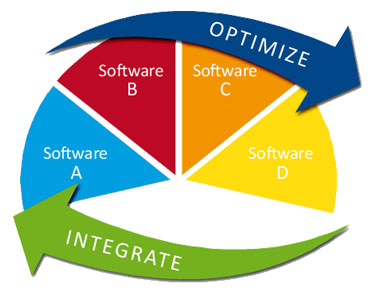Process Integration

Process integration can be described as a set of methods and tools for the effective management of the entire design process, often, but not necessarily, orienting it to the optimum solution. This approach is of utmost importance when designing a product because it helps engineers to overcome the common error of giving priority to the optimization of a single operation rather than to the entire process. Designing with the entire production chain in mind has a crucial positive influence on the overall quality of the project implementation.
Process integration is particularly important for companies that are taking advantage of virtual prototyping techniques in order to reduce physical testing. It represents an emerging class of devices, with the ability to disrupt classic product development.
The Numerical Aspects of Process Integration
A multidisciplinary design process is characterized by incremental changes at each step of the process, each with additional layers of complexity. The complete design process can be divided into several phases, with each phase receiving the contributions of many different engineers and departments. Each phase can be defined as a single module and each single module can be described as a finite group of tightly coupled relationships.
When each part of a product is optimized without the whole product in mind, engineers will typically try to optimize the goals as they relate to their own discipline without considering the problem as a whole. In doing so, the optimization of a single phase, can generate unexpected side effects for other phases, decreasing the overall performance of the finished product. Simply put, the optimal decision of a single department does not necessarily produce the global optimum for the entire design process.
For this reason it is necessary for engineers to make use of a process management tool which allows the creation of a workflow where different CAE tools can be coupled in a flexible and dynamic way. In so doing they will be able to build a workflow that is optimized for the entire production process rather than for just a single phase in that process.
The value of Process Integration
A collaborative optimization approach is the only way to manage a complex multidisciplinary design process. Through process integration, engineers can support the design of complex engineering systems and of all sub-systems by trying to meet conflicting requirements simultaneously. A multidisciplinary design process without a global view of the problem produces only sub-optimal designs, because bad decisions in each single phase may influence all subsequent decisions.
Moreover, this kind of approach can help engineers to:
- identify all the relationships between mutually interacting disciplines
- quickly investigate several designs
- analyze the influence of several reciprocally conflicting objectives
- identify the most robust solutions
As a result many companies are able to bring their products to market faster at a lower cost while improving the product quality and life cycle.
